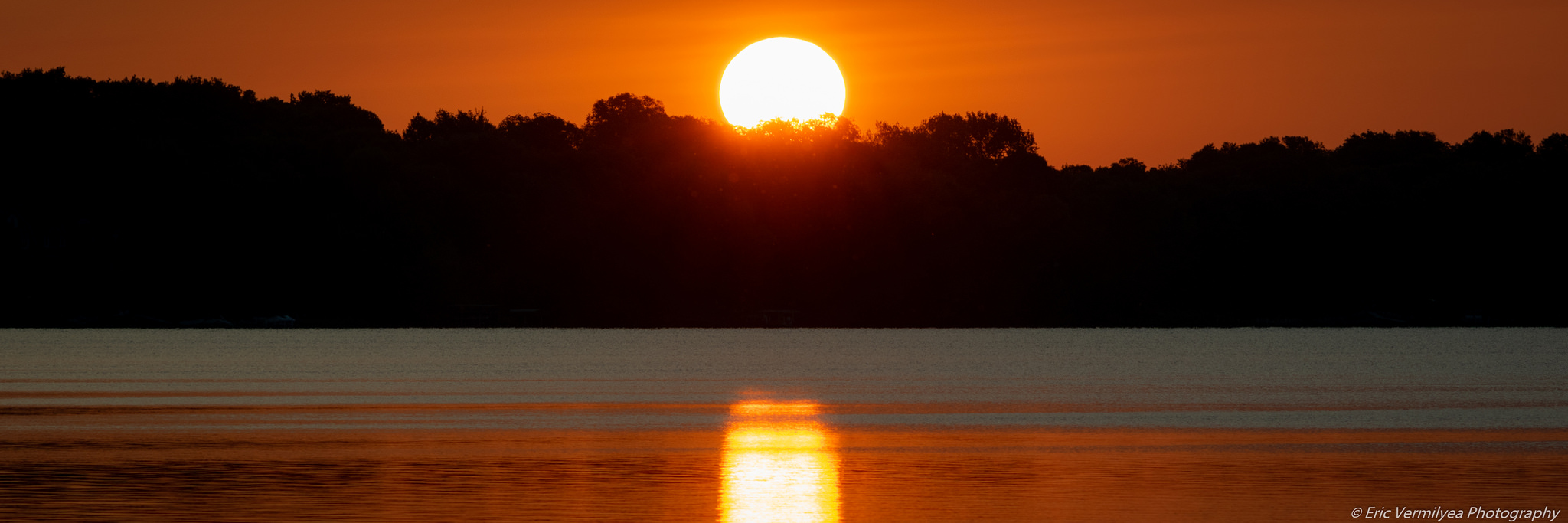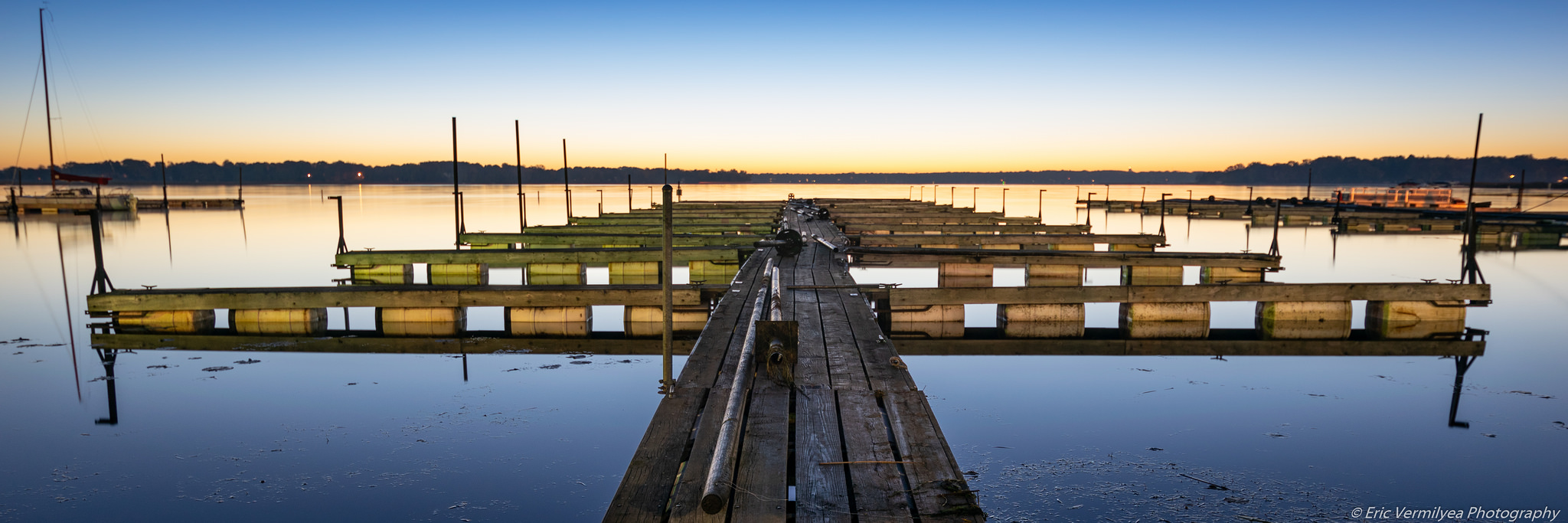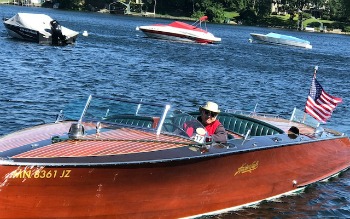WHITE BEAR LAKE CONSERVATION DISTRICT
LAKE MANAGEMENT PLAN
MAY 1999
Advisory Committee Meetings
August 4, 1998 Introductory Meeting of the Advisory Committee
- Review the planning process
- Develop a charge for the committee
- Report on the Condition of White Bear Lake
September 29, 1998 Vision, Goals and Problem Analysis
- Vision statement
- Problem analysis
October 22, 1998 Aquatic Plant Management
- Clarify the situation
- Characterize aquatic plant nuisances
- Review management & control strategies
November 5, 1998 Lake Use
- Problem analysis crowding, safety, speed, noise
- Water quality and environmental concerns
- Enforcement
December 1, 1998 Frame the Management Plan
- Review plan development process
- Review vision & goals
- Discuss management actions
January 19, 1999 Review Draft Management Plan
- Review and clarify draft plan
- Advisory Committee resolution
- Advisory Committee’s role in delivering the plan to the WBLCD
April 12, 1999 Clarifying the Draft Management Plan - Joint meeting with WBLCD Board
- Concerns and considerations for implementing the management plan
- Concerns with specific recommendations
- Housekeeping matters
Summary of WBLCD Ordinances
Ordinance No. 1 (12/1981): Conduct of vehicular activity on the ice.
- Speed limit of 15 mph when within 150 feet of shore or ice house, person, etc. Otherwise speed limit is 30 mph.
- Not in a careless, reckless or negligent manner.
- Not while under the influence.
- No excessive acceleration, sounds (less than 73 dB at 50 feet), throwing sand.
- Daytime hours of operation, except automobiles.
Ordinance No. 2 (10/1981): Prohibiting pollution
- No person can cause pollution of water, beaches.
- No discharge of sewage.
- Public events of more than 50 people require a license.
Ordinance No. 4 (7/1985): Use of White Bear Lake
- Watercraft must be state-licensed.
- No careless or reckless operation.
- No watercraft operation in swimming areas, within 100 feet of floaters, or 150 feet of diver’s flags.
- Water skis or towing: observer, hours of operation, length of rope, not within 100 feet of structures or public areas.
- Various watercraft safety sections.
- Reasonable speed of operation up to 35 mph.
- Right-of-way rules.
- Wash & wake: no wake in public, mooring, commercial or ASPSA.
- Seaplanes: Safe operation, watercraft may not obstruct.
- No excessive or unreasonable noise.
- Required equipment: standard stuff.
Ordinance No. 5 (10/1988. Amended 3/1995): Docks buoys and mooring areas
- Authorized dock use area (ADUA): 200 feet or if water depth is less than 4 feet, up to 300 feet.
- Single, multiple, multiple user, commercial and public dock areas.
- Dock location: cannot obstruct navigation or outside ADUA.
- Provisions for multiple user dock or mooring areas.
- Swimming floats and other temporary structures: requires license when outside ADUA.
- Construction, repair and maintenance standards: standard stuff, no signs.
- This ordinance does not supersede any municipal ordinance.
Ordinance No. 6 (5/1990): Appropriation and use of water
- "No person may pump or otherwise appropriate water from White Bear Lake at any time when the lake level is below an elevation of 923.5 feet above mean sea level."
Ordinance No. 7 (no date, Amended 1998): Sales from watercraft or seaplane
- Sale of food, beverages, supplies or other merchandise requires a license.
- Activity should not cause undo traffic or unduly interfere with recreational use.
Ordinance No. 9 (9/1994): Operation and rental of personal watercraft
- Hours of operation: Not between 8 p.m. and 8 a.m.
- Less than 5 mph or minimum wake within 100 feet of shore, swimmer, anchored boat, or dock.
- Less than 5 mph or minimum wake within between 100 and 300 feet from shore unless perpendicular to shore and not repetitively.
- No wake jumping within 100 feet of another watercraft.
- Operated in a reasonable and prudent manner: no endangerment of life, no weaving through congested traffic, no steering toward person or dock, no swerving.
- Rentals require a license.
November 23, 1998 Memo from the Technical Committee to the Advisory Committee
Date: 23 November 1998
From: Chip Welling
Member, Technical Committee
White Bear Lake Management Plan
To: Advisory Committee, White Bear Lake Management Plan
Subject: Issues and concerns regarding Eurasian watermilfoil and other aquatic plants
I am writing to respond to Advisory Committee’s request that the White Bear Lake Technical Committee prepare a brief written report on three technical issues regarding Eurasian watermilfoil. These issues arose during the 22 October 1998 meeting of the White Bear Lake Advisory Committee.
In late October, I distributed an early version of this memo to members of the Technical Committee who seemed to be interested in working on it. Issues to be addressed in the memo were discussed on 5 November a meeting held at the Minnesota Department of Natural Resources’ (DNR) office in St. Paul. It was attended by Terry Noonan, Steve McComas, John Steinworth, Mary Sue Simmons, Dick Osgood, and Dave Zappitello. Since that meeting, later drafts of the memo have been reviewed by Mike Halverson and Wendy Crowell of the DNR, as well as by John Madsen, Aquatic Plant Control Program, U.S. Army Corps of Engineers, Waterways Experiment Station in Vicksburg, Mississippi.
Item # 1. Future abundance of Eurasian watermilfoil
The future abundance of Eurasian watermilfoil in White Bear Lake concerns the Advisory Committee because of the potential nuisances that may be created by this exotic aquatic plant. The Committee suggested that the high level of abundance of milfoil observed in the lake in 1998 raises the following question. In 1998, did milfoil reach a maximum level of abundance or did it reach an intermediate level of abundance, which will be exceeded in future years?
My answer to this question is that I believe that Eurasian watermilfoil most likely has not yet reached its maximum level of abundance in White Bear Lake, and consequently will probably be more abundant during at least some future years than it was during 1998. A discussion of the basis for this assessment is given below.
GENERAL DISCUSSION OF EURASIAN WATERMILFOIL
Relationship between growth of Eurasian watermilfoil and environmental conditions
To address this subject, we will briefly review our understanding of the growth of Eurasian watermilfoil and environmental conditions. In Minnesota, Eurasian watermilfoil has caused problems in lakes by producing extensive mats where water depths are less than 15 feet, water clarity is high (mid-summer Secchi disk readings of six feet or more), and the fertility of the bottom ranges from moderate to high (see Smith and Barko 1990).
Milfoil has not caused extensive problems in every body of water where it is established. Milfoil generally does not produce mats at the surface in water more than 12 to 15 feet deep. In lakes with low water clarity (mid-summer Secchi disk readings less than six feet), milfoil has not produced mats in water more than six feet deep, if at all. In areas of lakes where the fertility of the bottom is low, for example in sandy areas, the growth of milfoil and aquatic plants in general tends to be low.
The abundance of milfoil can vary over the course of a season. Eurasian watermilfoil colonies not only die back in depth each year, but also the clones will shrink in size in many lakes (John Madsen, personal communication(pers. comm.)). Consequently, there will be an apparent decrease of Eurasian watermilfoil in the spring, with increased matting and spread in the late summer and fall, even if the population doesn’t spread to new sites. How early the matting occurs will vary from year to year based on many different environmental factors, including those described above.
Relationship between growth of Eurasian watermilfoil and age of population
The growth of Eurasian watermilfoil depends to some extent on the age of the population, that is, the time since establishment of the plant in a body of water. There is a lag phase during which Eurasian watermilfoil is at low levels. For example, many lakes in New York state had low levels of Eurasian watermilfoil for a decade or more, before large populations were established (John Madsen, pers. comm.). Apparently, the more fertile the sediments or higher the water alkalinity, the shorter the lag phase. In Minnesota, Eurasian watermilfoil has been observed for approximately one decade, so it is difficult to predict the future abundance of the plant in the state.
Declines in Eurasian watermilfoil
Declines in milfoil have been observed in other Minnesota lakes, as well as bodies of water in other parts of North America (Smith and Barko 1990, Barko et al 1994 and accompanying papers). Factors that may have contributed to these declines include herbivory by aquatic insects and damage caused by pathogens (Smith and Barko 1990). Unfortunately, the potential effects on milfoil of either aquatic insects or pathogens are incompletely understood and unpredictable at present.
Most of the reported "declines" of Eurasian watermilfoil, as in the lakes of the Tennessee Valley Authority, were caused by changes in environmental conditions and followed by rebounds in abundance of the plant (John Madsen, pers comm). Several of the lakes in which Eurasian watermilfoil appeared to decline from weevil herbivory, such as Fish Lake in Wisconsin, later recovered - despite the fact that weevil numbers were still high (Lillie 1996). Most sustained declines of milfoil have occurred in marginal habitats for the species, such as Brownington Pond in Vermont and Devil’s Lake in Wisconsin (John Madsen, pers comm). For every milfoil lake with a sustained decline, there are a dozen lakes that have sustained populations of the plant for the past 30 years. Overall, Eurasian watermilfoil declines are unpredictable and typically unsustained or unsustainable.
DISCUSSION OF EURASIAN WATERMILFOIL IN WHITE BEAR LAKE
White Bear Lake
White Bear Lake is located eight miles northeast of St. Paul, Minnesota. The lake has a surface area of 2,416 acres. In Minnesota, the legal definition of the littoral zone is the area in a lake that is less than 16 feet deep, which in White Bear Lake occupies 1,314 acres. The lake has three distinct basins: the north basin has a maximum depth of about 30 feet and an extensive littoral area; the west basin has a maximum depth of 22 feet and an extensive littoral area; the southeast basin has a maximum depth of 83 feet and relatively less littoral area than is found in the other two basins. The quality of the water in this lake in recent years is summarized in table 1.
Table 1. Water quality in White Bear Lake from 1989 to 1997 (Osgood 1998).
| Variable |
Nine-year average |
Nine-year range |
| Total phosphorus (ppb) |
19 |
13-23 |
| Chlorophyll a (ppb) |
5 |
3-6 |
| Secchi Disk (feet) |
15 |
13-18 |
Status of Eurasian watermilfoil in White Bear Lake during 1998
In White Bear Lake, McComas and Stuckert (1998a) surveyed the aquatic vegetation and found Eurasian watermilfoil at a frequency of 56% during August, 1998. This is an increase by comparison with the 21% frequency reported for 1997 (McComas and Stuckert 1998b). These authors reported that milfoil formed mats at the water’s surface in at least five areas in depths generally less than seven feet. Total area of the matted milfoil was estimated to be less than 10 acres during 1998. In 1998, McComas and Stuckert (1998) found less matted milfoil during a survey conducted during June than they found during August.
It is important to note that, during 1998, milfoil appears to have reached maximum levels abundance in White Bear Lake during August, but not before. Early in the summer of 1998, during May and June, levels of precipitation were high and weather was cloudy and cool. This was followed by warm and dry weather during August and September, which appears likely to have promoted the growth of milfoil late in the season.
McComas and Stuckert (1998a) also sampled the substrate and found a positive correlation between the abundance of milfoil and fertility of the lake soil, as indicated by levels of exchangeable ammonium. They predicted high potential for matting milfoil growth in five areas of White Bear Lake (see Figure 12 in McComas and Stuckert 1998a).
Based on analysis by John Madsen (pers comm) of Eurasian watermilfoil frequency in lakes across a range of environmental conditions, White Bear Lake is in a range in which Eurasian watermilfoil has its peak distribution and dominance (Madsen 1998). Nevertheless, there are many lakes of similar conditions in which Eurasian watermilfoil does not attain peak levels of dominance.
Status of Eurasian watermilfoil in White Bear Lake in the future
I believe that Eurasian watermilfoil most likely has not yet reached its maximum level of abundance in White Bear Lake, and consequently will probably be more abundant during at least some future years than it was during 1998. Nevertheless, it is impossible to predict with certainty the future abundance of milfoil in White Bear Lake. Consequently, I will briefly review some of the factors that are likely to influence the future abundance of the plant in this lake. I also will offer an assessment of several predictions of future abundance of milfoil that were made by other individuals.
The future abundance of Eurasian watermilfoil in White Bear Lake will depend, at least in part, on weather. It is likely that Minnesota will experience drought conditions in the future. If these conditions develop early in the season, as they did in 1988, it seems possible that milfoil will reach high levels of abundance and form mats at the water’s surface earlier than was the case in 1998. Under conditions of drought, especially one that develops early in the season, it also is possible that mats of milfoil will occupy more area than those observed in 1998 (see Figure 12 in McComas and Stuckert 1998a) . On the other hand, wet and cool weather in future seasons would be likely to limit the abundance of milfoil in White Bear Lake.
The future abundance of Eurasian watermilfoil in White Bear Lake may increase if the plant displaces native plants in certain areas of the lake. Madsen et al. (1991) found that native plants decreased after invasion of Eurasian watermilfoil. For example, there are areas with abundant native plants, especially Najas, that one might expect to be vulnerable to replacement by milfoil.
The future abundance of Eurasian watermilfoil in White Bear Lake may decrease. John Madsen (pers comm) predicts that milfoil may decline in White Bear Lake, but is more likely not to decline, or to decline for a brief period of time, and then return to previous levels of abundance. Since there can be substantial variation from year to year in the abundance of milfoil, John Madsen (pers comm) doesn’t believe that we will know what the "average" abundance in White Bear Lake will be for many years to come.
In a memo delivered to the White Bear Lake Advisory Committee and WBLCD on 22 October 1998, Mr. Mike Crary observed that the milfoil tripled in one year, which appears to be a reference to the increase in frequency of milfoil from 1997 to 1998 (McComas and Stuckert 1998b). Mr. Crary believes that immediate action to control milfoil should be taken in the spring of 1999. I believe that nuisances caused by milfoil in the future can be managed by currently available methods under current regulations. Based on experience in management of milfoil in Minnesota, the future distribution and abundance of milfoil is likely to depend more on environmental conditions than on management. In other words, control of milfoil in one year - subject to the limits in Minnesota regulations - is not likely to limit the abundance of the plant in subsequent years, if the environmental conditions in those years favor the growth of the plant.
Summary
The Advisory Committee suggested that the high level of abundance of milfoil observed in the lake in 1998 raises the following question. In 1998, did milfoil reach a maximum level of abundance or did it reach an intermediate level of abundance, which will be exceeded in future years? I believe that Eurasian watermilfoil most likely has not yet reached its maximum level of abundance in White Bear Lake, and consequently will probably be more abundant during at least some future years than it was during 1998. Control of milfoil in one year is not likely to limit the abundance of the plant in subsequent years, if the environmental conditions in those years favor the growth of the plant.
Literature cited
Barko, J. W., C.S. Smith, and P.A. Chambers. 1994. Perspectives on submersed macrophyte invasions and declines. Lake and Reservoir Management 10:1-3.
Lillie, R.A. 1996. A milfoil decline associated with aquatic weevils in a southern Wisconsin lake. Abstract of a paper presented at the 16th Annual International Symposium on Lake, Reservoir, and Watershed Management, Minneapolis/St. Paul, Minnesota, 13-16 November 1996. Final Program, North American Lake Management Society, P.O. Box 5443, Madison, WI 53705-5443.
Madsen, J.D. 1998. Predicting invasion success of Eurasian watermilfoil. J. Aquat. Plant Manage. 36:28-32.
Madsen, J.D., J.W. Sutherland, J.A. Bloomfield, L.W. Eichler and C.W. Boylen. 1991. The decline of native vegetation under dense Eurasian watermilfoil canopies. J. Aquat. Plant Manage. 29:94-99.
McComas, S., and J. Stuckert. 1998a. White Bear Lake aquatic plant survey. Unpublished report prepared for the White Bear Lake Conservation District, 4701 Highway 61, White Bear Lake, MN 55110 by Blue Water Science, 550 Snelling Av. South, St. Paul, MN 55116.
McComas, S., and J. Stuckert. 1998b. Highlights of the White Bear Lake aquatic plant survey and related studies 1998. Unpublished report prepared for the White Bear Lake Conservation District, 4701 Highway 61, White Bear Lake, MN 55110 by Blue Water Science, 550 Snelling Av. South, St. Paul, MN 55116.
Osgood, D. 1998. Report on the condition of White Bear Lake. Unpublished report prepared for the White Bear Lake Conservation District prepared by Ecosystem Strategies, 22035 Stratford Place, Shorewood, MN 55331.
Smith, C.S. and J.W. Barko. 1990. Ecology of Eurasian watermilfoil. Journal of Aquatic Plant Management 28: 55-64.
Item # 2. Advisory Committee’s definition of a nuisance caused by Eurasian watermilfoil
In view of the Technical Committee, the Advisory Committee’s definition of a nuisance caused by Eurasian watermilfoil is of interest to the extent that it results in a need for review by the DNR, presumably in response to an application for a permit to manage aquatic vegetation. If areas proposed for treatment with herbicides or mechanical harvesting meet the standards for issuance of an aquatic plant management permit (see memo by Welling of 4 November 1998 on Minnesota Rules Chapter 6280), then a permit likely would be issued. These standards do not include distance from the tops of the plants to the water’s surface or percentage of Eurasian watermilfoil in a plant community.
Item # 3. Minutes from the Advisory Committee’s meeting on 22 October
We have no additional technical or regulatory concerns regarding the minutes.











